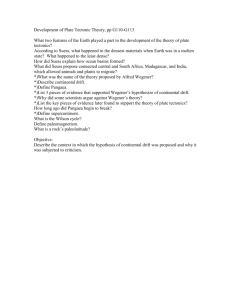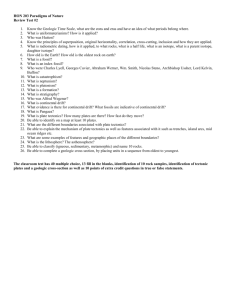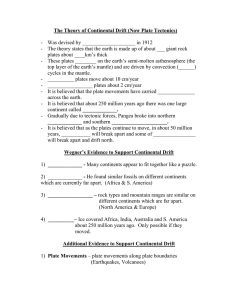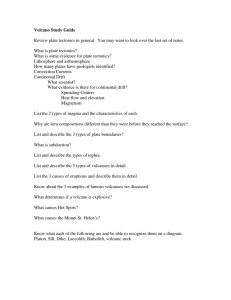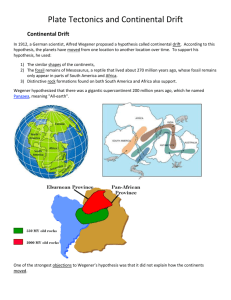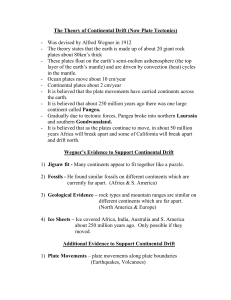Yakima WATERS Mini Lesson Learning Plate Tectonics Using Paper Models
advertisement
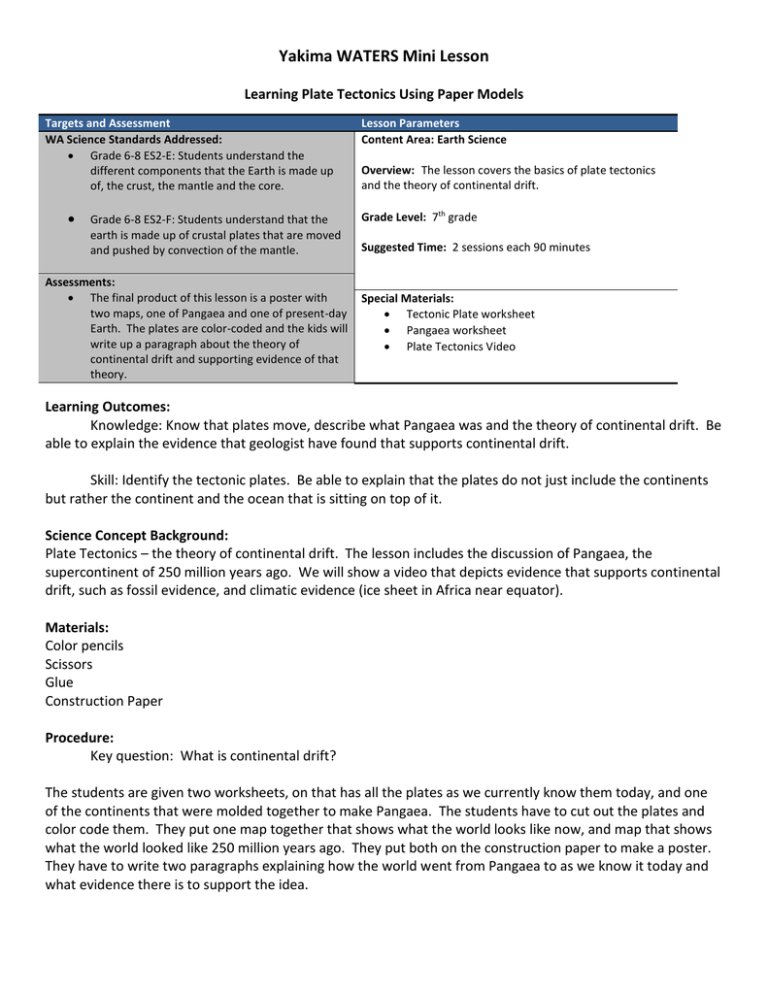
Yakima WATERS Mini Lesson Learning Plate Tectonics Using Paper Models Targets and Assessment WA Science Standards Addressed: Grade 6-8 ES2-E: Students understand the different components that the Earth is made up of, the crust, the mantle and the core. Grade 6-8 ES2-F: Students understand that the earth is made up of crustal plates that are moved and pushed by convection of the mantle. Assessments: The final product of this lesson is a poster with two maps, one of Pangaea and one of present-day Earth. The plates are color-coded and the kids will write up a paragraph about the theory of continental drift and supporting evidence of that theory. Lesson Parameters Content Area: Earth Science Overview: The lesson covers the basics of plate tectonics and the theory of continental drift. Grade Level: 7th grade Suggested Time: 2 sessions each 90 minutes Special Materials: Tectonic Plate worksheet Pangaea worksheet Plate Tectonics Video Learning Outcomes: Knowledge: Know that plates move, describe what Pangaea was and the theory of continental drift. Be able to explain the evidence that geologist have found that supports continental drift. Skill: Identify the tectonic plates. Be able to explain that the plates do not just include the continents but rather the continent and the ocean that is sitting on top of it. Science Concept Background: Plate Tectonics – the theory of continental drift. The lesson includes the discussion of Pangaea, the supercontinent of 250 million years ago. We will show a video that depicts evidence that supports continental drift, such as fossil evidence, and climatic evidence (ice sheet in Africa near equator). Materials: Color pencils Scissors Glue Construction Paper Procedure: Key question: What is continental drift? The students are given two worksheets, on that has all the plates as we currently know them today, and one of the continents that were molded together to make Pangaea. The students have to cut out the plates and color code them. They put one map together that shows what the world looks like now, and map that shows what the world looked like 250 million years ago. They put both on the construction paper to make a poster. They have to write two paragraphs explaining how the world went from Pangaea to as we know it today and what evidence there is to support the idea. Teaching Tips: The kids had trouble understanding the plate was its own entity and not just a continent. The color-coding helped them understand than a plate includes all of the landmass and ocean sitting on top of it. Supplements: www.usgs.gov/earthquakes “Plate Tectonics” Video Author: Sarah Nagorsen, Yakima WATERS Project, CWU, Fall 2009
